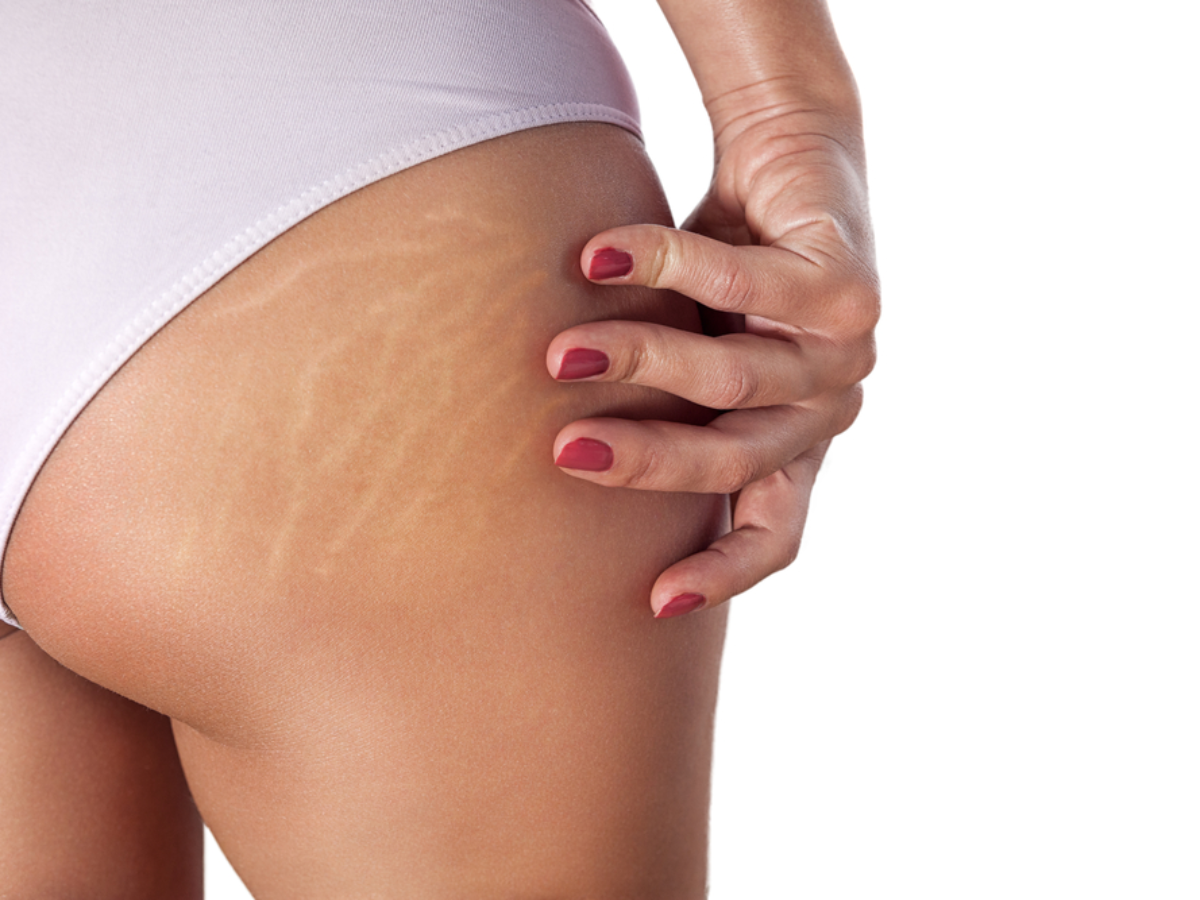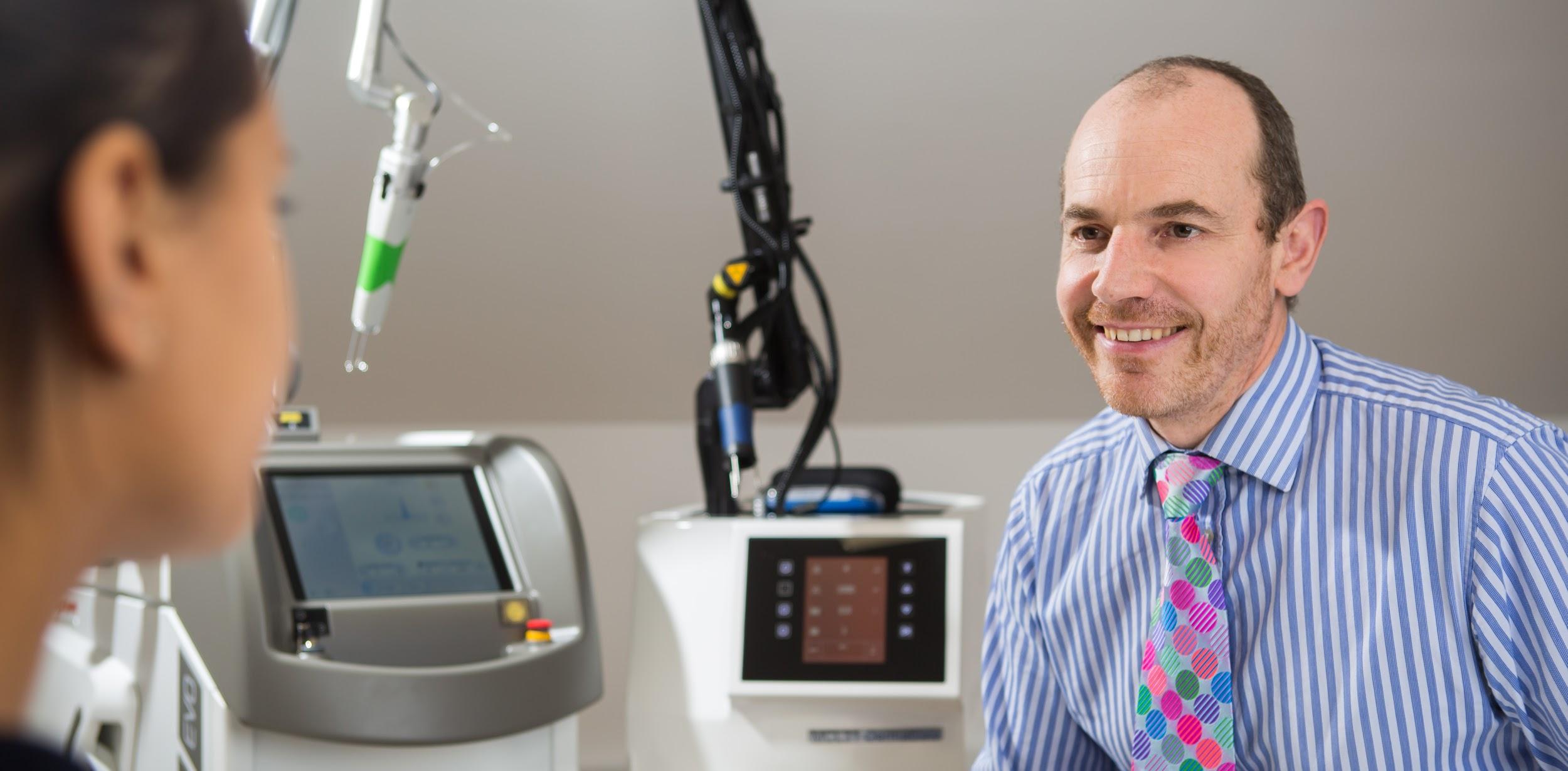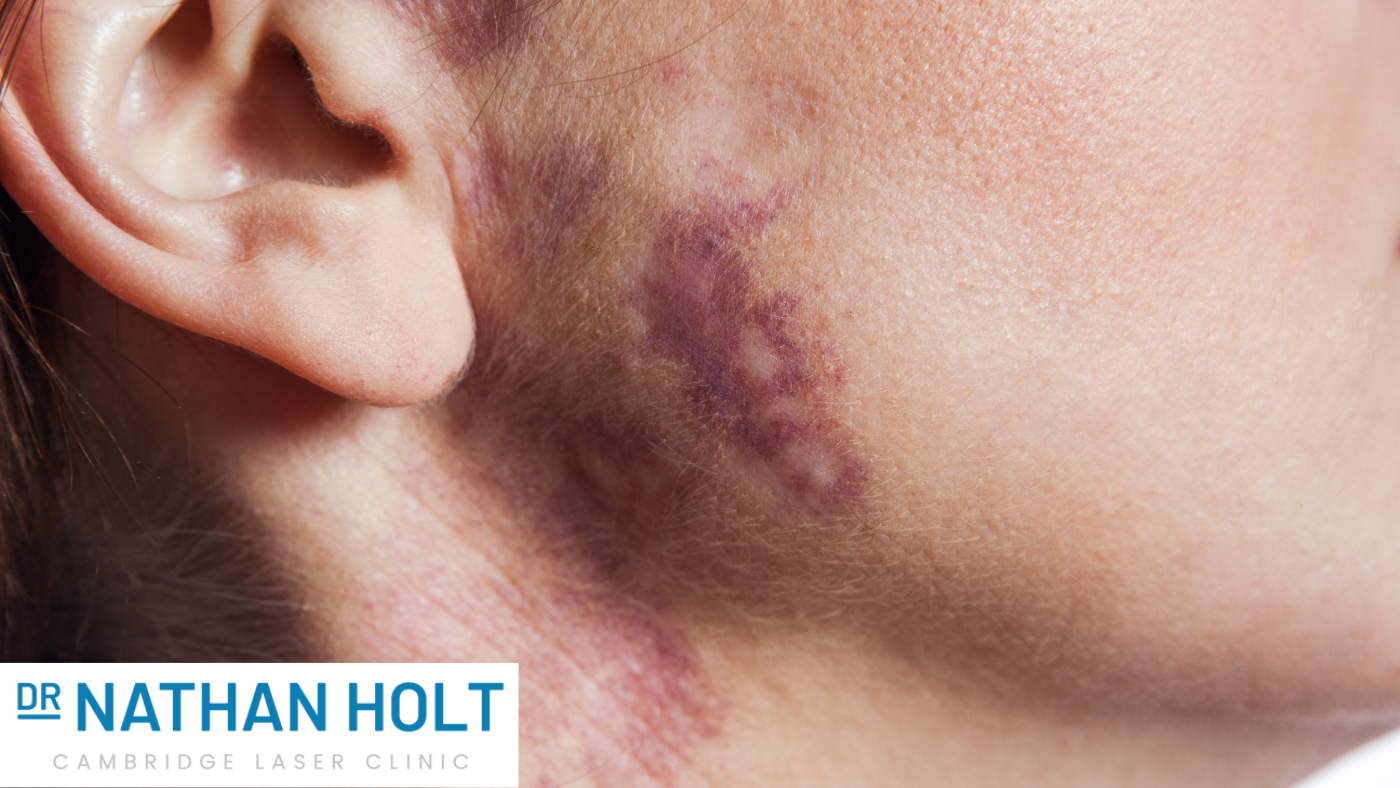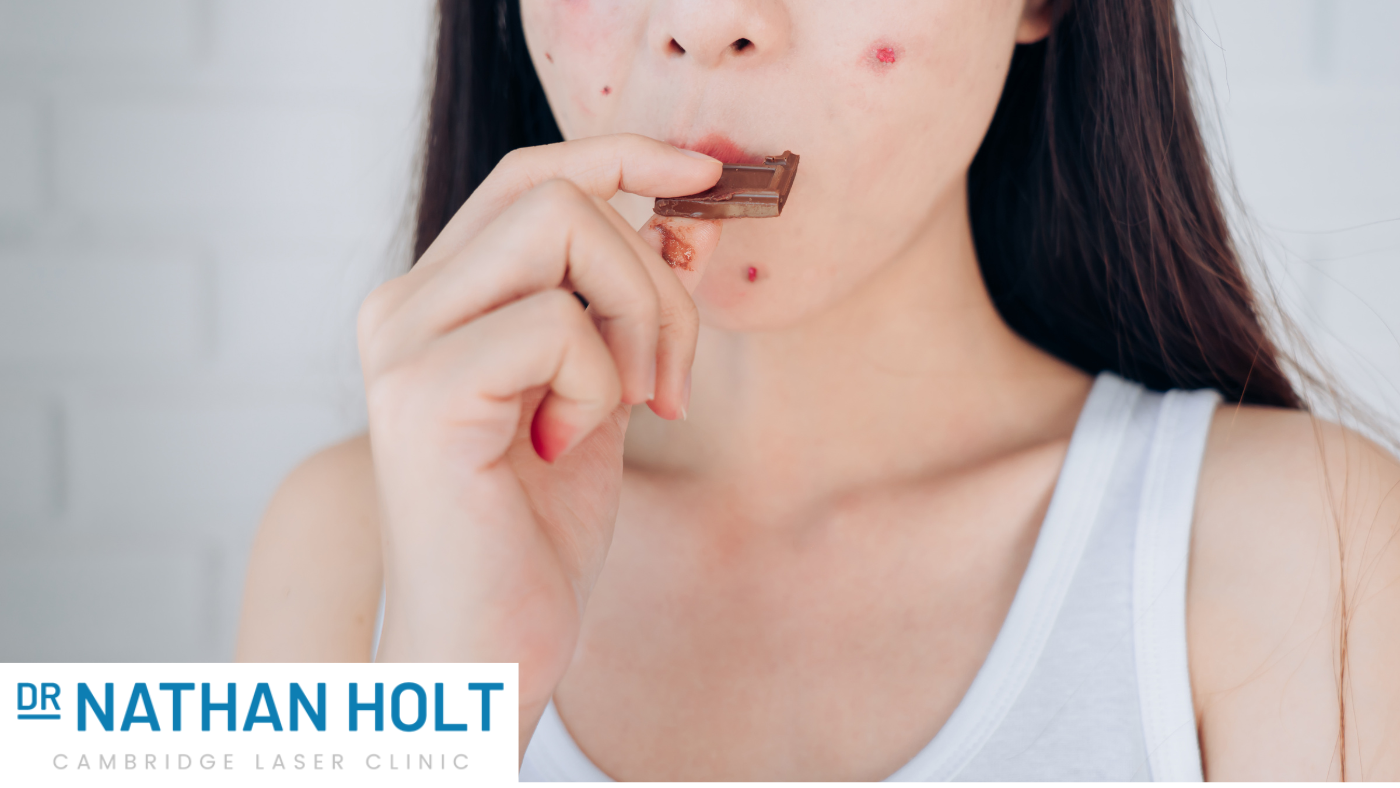Rosacea, a chronic skin condition characterised by facial redness, swelling, and visible blood vessels, can…

Stretch Marks: Causes, Effects, Treatment and Prevention
Far from something to be ashamed of, stretch marks are actually a visual reminder of the incredible resilience of the human body. Not to mention, a misunderstood and maligned cosmetic ‘imperfection’ that approximately 80% of people will experience at some point during their life.
Of course, appreciating the science behind stretch marks and taking pride in your appearance when the issue becomes problematic are two entirely different things. Stretch marks are not considered particularly attractive by most and can inevitably take a toll on your self-esteem.
The good news is that where stretch marks become in any way adversely life-affecting, today’s most advanced cosmetic technologies can practically eliminate the issue entirely. All by way of a safe, painless and affordable course of treatment, provided by a qualified practitioner.
In this guide, we’ll be taking a look at several key questions on the subject of stretch marks, including what causes them, how they can be treated and whether they can be prevented in the first place.
What Are Stretch Marks?
Stretch marks, also known as striae, are silvery or reddish streaks that manifest on patches of skin around specific areas of the body. They often occur due to rapid weight gain, pregnancy, growth spurts, or hormonal changes.
These marks indicate that your skin has stretched beyond its limits, causing the underlying collagen and elastin fibres to tear. Stretch marks occur when the body has to adapt to and accommodate major changes to the structure of the skin.
What Actually Causes Stretch Marks?
Stretch marks are formed when the middle layer of your skin – the dermis – is stretched beyond its normal capacity. This strain causes the collagen and elastin fibres to break, resulting in those distinctive marks.
The skin’s outer layer – the epidermis – thins over these broken fibres, which is why stretch marks appear slightly sunken and have a different texture to the surrounding skin.
Do Stretch Marks Go Away On Their Own?
Initially, stretch marks may appear as reddish or purplish lines, which in all instances have the potential to fade over time. However, they generally won’t vanish completely on their own.
As the blood vessels under the skin heal and the collagen repairs itself, stretch-marked will gradually become less pronounced. Though the long-term prognosis will be influenced by the extent and severity of the damage to the skin.
How Long Does It Take For Stretch Marks To Fade?
The timeline for stretch marks to fade varies from person to person. In some cases, they might become less noticeable within a few months, while for others, it could take several years.
Factors such as your skin type, genetics and the severity of the stretch marks play a role in the fading process. Though again, the chances of stretch marks disappearing completely without treatment are minimal.
What Risk Factors Influence A Person’s Likelihood Of Getting Stretch Marks?
The likelihood of whether or not a person will develop stretch marks at some point in their life is influenced by a broad range of factors. Examples of which include:
- Genetics: Your genetic makeup plays a significant role in determining your skin’s elasticity and ability to withstand stretching. If stretch marks are something of a recurring theme in your family, you may be more likely to develop them yourself.
- Rapid Weight Gain or Loss: Sudden weight changes can cause the skin to stretch or contract rapidly, causing the breakdown of collagen and elastin fibres in the dermis, leading to stretch marks.
- Pregnancy: The rapid weight gain and hormonal changes associated with pregnancy can affect skin elasticity. Skin can subsequently stretch far beyond its usual capacity – especially in areas like the abdomen and hips – leading to stretch marks.
- Puberty: Rapid growth during adolescence can cause the skin to stretch significantly and within a short space of time. Hormonal changes also influence the skin’s structural integrity, increasing the chances of stretch marks forming.
- Hormonal Fluctuations: Hormones like cortisol, which is associated with stress, can weaken the skin’s collagen fibres, making it more susceptible to stretching. Hormonal imbalances can disrupt the skin’s normal elasticity.
- Corticosteroid Use: Prolonged or high-dose use of corticosteroid medications can impair collagen production and skin elasticity, making the skin more prone to stretch marks.
- Skin Type: Individuals with certain skin types, like fair or light skin, may be more susceptible to stretch marks due to a lower concentration of melanin, which provides some protection against collagen breakdown.
- Underlying Medical Conditions: Certain conditions, such as Marfan syndrome and Cushing’s syndrome, can affect collagen synthesis and skin elasticity, increasing the likelihood of developing stretch marks.
- Age: As you age, your skin naturally loses some of its elasticity and collagen production slows down. This reduced skin support can make it easier for stretch marks to form, especially with sudden changes in body size.
- Lifestyle Factors: Poor nutrition, inadequate hydration and smoking can impact skin health and its ability to withstand stretching. Nutrient deficiencies can compromise collagen production, while smoking reduces blood flow, hindering skin repair.
Are Stretch Marks Dangerous?
One of the few positive things that you can say about stretch marks is that they are, at least, completely harmless. They might be a cosmetic concern, but they don’t pose any specific health risks.
They’re simply a visual indication of the skin’s adaptation to changes beyond its normal capacity, similar to surface scarring which does not in any way affect your overall health.
Do Teenage Stretch Marks Go Away Eventually?
Stretch marks that develop during puberty occur due to rapid growth spurts and parts of the body grow faster than the skin can keep up with. These adolescent stretch marks often appear particularly prominent and defined, but also tend to fade much faster and more completely than other adult stretch marks.
Most teenage stretch marks will eventually fade to a point where they become barely noticeable, but in most cases will not fully disappear without appropriate treatment.
Are Stretch Marks Caused Or Exacerbated By Stress?
Stress itself doesn’t directly cause stretch marks, but has the potential to heighten a person’s likelihood of developing stretch marks indirectly. Elevated stress levels can potentially lead to poor lifestyle choices, which in some instances may have an adverse effect on a person’s skin health.
Excessive alcohol consumption, smoking, poor diet and inadequate sleep, for example, can all exacerbate a person’s risk of developing stretch marks.
Is It True That Vaseline Can Remove Stretch Marks?
While Vaseline and moisturisers in general can help keep your skin hydrated and improve its overall appearance, they won’t remove stretch marks completely.
That said, ensuring your skin is well moisturised will help maintain its suppleness and elasticity, potentially reducing your likelihood of developing stretch marks in the first place.
Can You Tattoo Over Stretch Marks?
Contrary to popular belief, the answer is yes – you can tattoo over stretch marks. Though it’s important to factor in the extent to which the colour texture of the stretch marks may affect the way the tattoo looks.
If in doubt, it may be advisable to consider having your stretch marks treated, before tattooing the affected area.
How Can I Reduce Stretch Marks Naturally?
While the complete removal of stretch marks might not be achievable through natural means, there are methods to help them fade.
Massaging affected areas, using products with ingredients like retinoids or hyaluronic acid and practicing a healthy lifestyle can improve their appearance.
What Non-Surgical Treatments Are Available for Stretch Marks?
Advancements in cosmetic dermatology have made it safer and simpler than ever before to completely eradicate stretch marks. There are various different technologies available – each with its own unique benefits and practical applications – which target the underlying cause of stretch marks, as opposed to simply hiding them from view.
These include:
- Laser Therapy: Laser treatments use focused energy to stimulate collagen production and improve the appearance of stretch marks. They work by promoting skin remodelling and fading the marks over time.
- Microneedling: This procedure involves tiny needles that create controlled micro-injuries in the skin, triggering collagen production and encouraging skin regeneration. As your skin heals, the appearance of stretch marks can diminish.
- Radiofrequency (RF) Therapy: RF treatments deliver energy deep into the skin, promoting collagen synthesis and tightening the skin. This can lead to a reduction in the appearance of stretch marks.
- Chemical Peels: Chemical peels involve applying a chemical solution to the skin, exfoliating the top layer and stimulating collagen production. Over time, this can help fade stretch marks.
- Topical Treatments: Prescription creams containing retinoids, hyaluronic acid, or other active ingredients can improve the texture and appearance of stretch marks by encouraging collagen production and skin renewal.
Contact Cambridge Laser Clinic
At Cambridge Laser Clinic, we’re proud to offer a comprehensive range of treatment options for all types of stretch marks. Whether you’ve made the decision to undergo treatment or would simply like to learn more about how our non-surgical procedures work, we would be delighted to provide you with an obligation-free consultation at your convenience.
Call today for a chat with a member of our team, or email us anytime and we’ll get back to you as promptly as possible.



